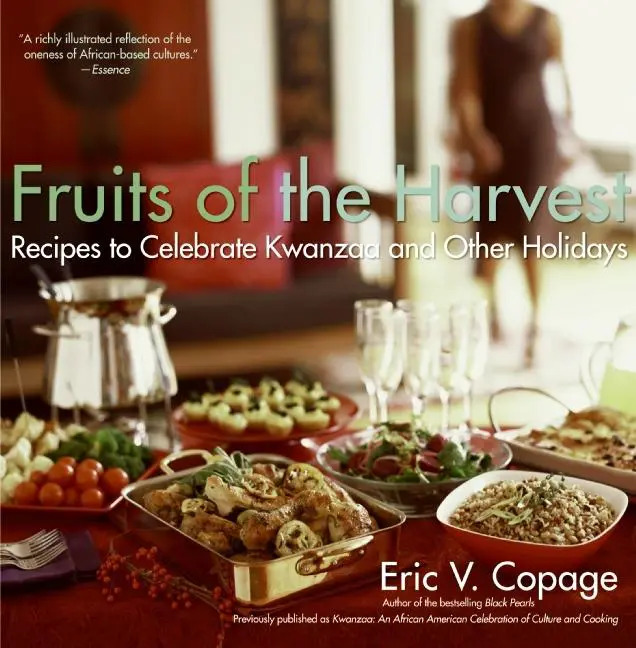Pigeon Peas and Rice (CARIBBEAN)
"This is the traditional main dish in Puerto Rico," says Saalik Cuevas. "If you don't have it at your birthday, your wedding, or as part of a holiday meal, it seems as if something is missing from the celebration. It's difficult to find these peas fresh in the United States, but you can find them canned. But in Puerto Rico you don't even have to buy them. You just go in your backyard and pick them."
SOFRITO
"You cannot cook Puerto Rican food without sofrito," says Saalik Cuevas. "It is the base of the whole cuisine, kind of like the roux in gumbo. Likewise, you judge the quality of the Puerto Rican meal by the quality of the sofrito. When we were having pork chops or fried chicken, my mother would make very colorful yellow rice, which she, like all Puerto Ricans, would turn yellow by adding sofrito. In Ghana they use a palm oil to get that color, as they do in Brazil. But of course, sofrito is not all color; it's the spices that go into it. When I visited my mother after she moved back to Puerto Rico, I'd go into the garden to get the oregano and other spices used in it."

ARROZ CON GANDULES SAN JUAN Pigeon Peas and Rice
Cook's Notes: Rice and pigeon peas, separately and together, are omnipresent in Caribbean cookery. But they reach their peak in Puerto Rican cuisine, colored with achiote oil and seasoned with sofrito, both of which are available commercially in Latin American communities, although particular cooks insist on making it homemade. Achiote oil gets its deep orange color from a steeping of annatto seeds and gives many Latin American foods an exuberant yellow color. You may get in the Latino habit of always using achiote oil in place of butter when you make rice.
Sofrito is an all-purpose seasoning mixture of cooked savory vegetables that has many uses beyond this dish. Try stirring some into scrambled eggs or simmering some with a can of herbed tomato sauce as a quick topping for pasta. So, while this recipe for unassuming "rice and pigeon peas" may seem complicated, it surely isn't—and you'll get many meals' worth of seasoning from making the achiote oil and sofrito as described here.
Serves 6
ACHIOTE OIL:
SOFRITO:
1. Make the achiote oil: In a small saucepan, cook the oil and annatto seeds over low heat just until the mixture turns bright red, about 4 minutes. Do not let the mixture get too hot and overcook--it will go past the dark red stage and lighten in color and decrease in flavor. Longer steeping does not mean better flavor in this case, so it is best to underestimate your cooking time. Strain the achiote oil into a small jar, discarding the seeds. Cool completely, cover, and store indefinitely in the refrigerator.
2. Make the sofrito: Heat the 1/3 cup achiote oil in a medium skillet. Add the onion, garlic, bell pepper, oregano, cumin, salt, and bay leaf. Cook over medium-low heat, stirring often, until well softened, about 10 minutes. Stir in the parsley. Cool completely, transfer to a small jar or bowl, cover, and store for up to 2 weeks in the refrigerator.
3. In a large saucepan, combine the pigeon peas with enough water to cover by 1 inch; bring to a boil over high heat. Boil for 1 minute. Remove the pan from the heat, cover tightly, and let stand for 1 hour. (Or soak the peas overnight in a large bowl with enough cold water to cover by 3 inches.) Drain well.
4. In a large saucepan, bring the drained peas and 4 cups of the water to a boil over high heat. Reduce the heat to low, and cook until the peas are almost tender, about 45 minutes. Drain the peas and set them aside.
5. Heat the 3 tablespoons achiote oil in a large saucepan. Add the 1/3 cup sofrito and cook over medium heat until very hot, about 2 minutes. Add the rice and stir until well coated and yellow, about 1 minute. Add the remaining 4 cups water, the drained peas, salt, and pepper, and bring to a boil. Reduce the heat to medium-low, and cook until the rice and peas are tender, about 20 minutes.
Stir in the parsley and serve immediately.
NOTE: One (16-ounce) can pigeon peas, drained, can be substituted for the cooked peas; skip Steps 3 and 4.
***

